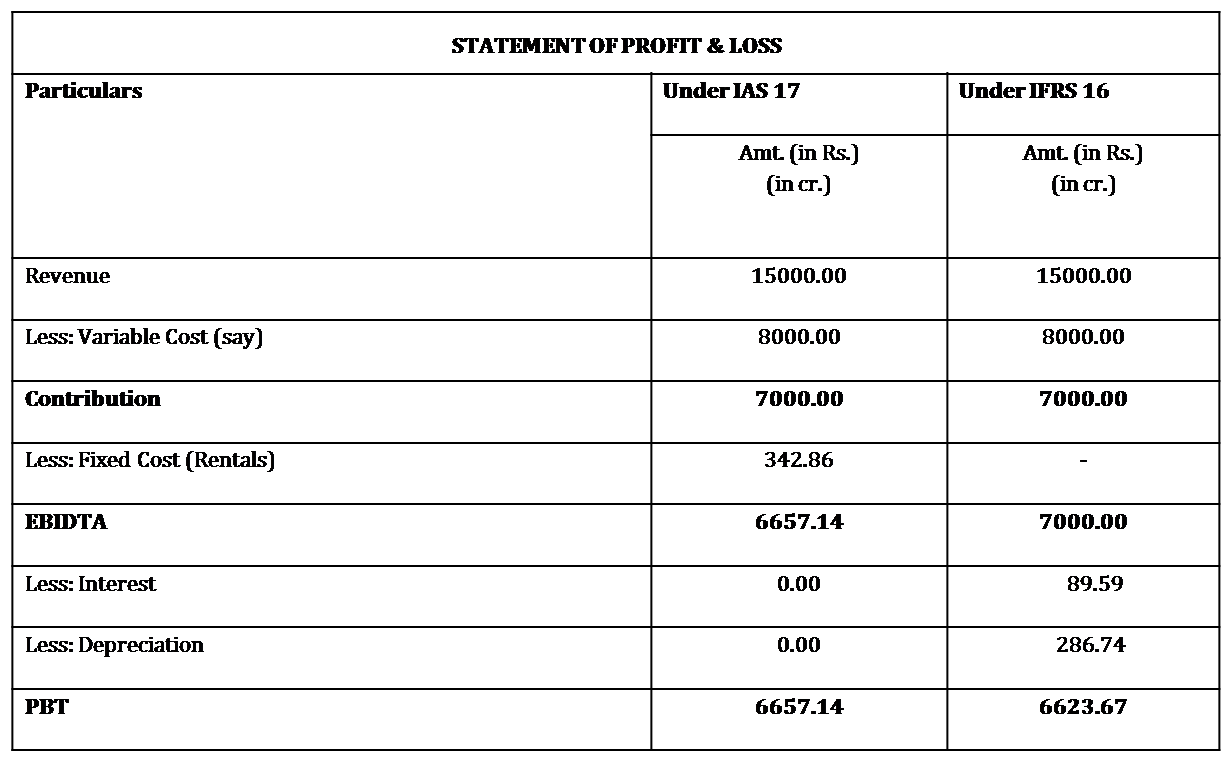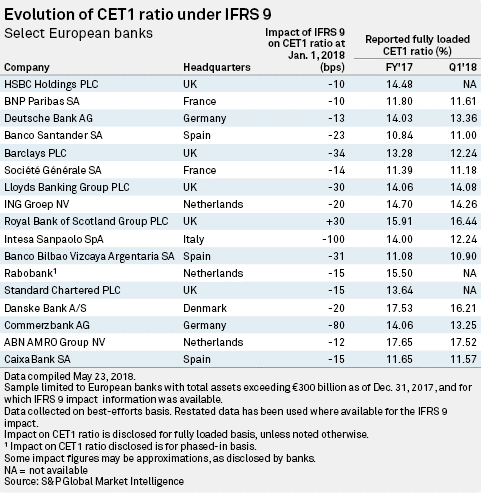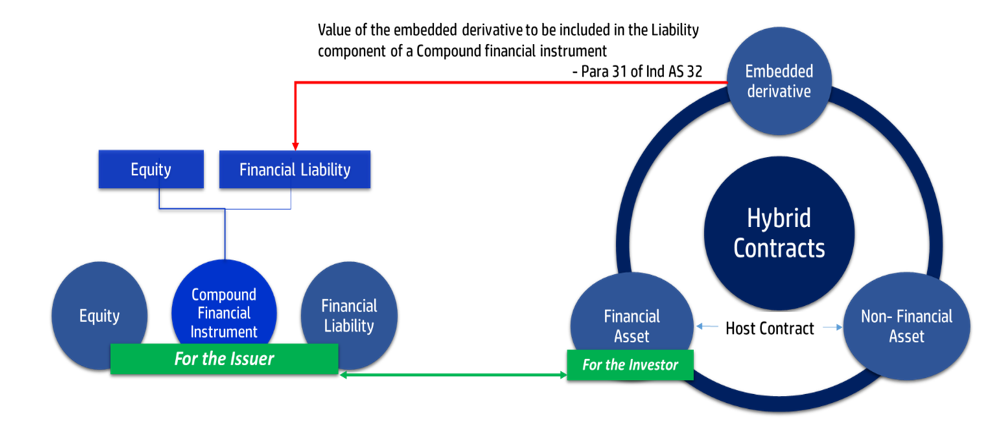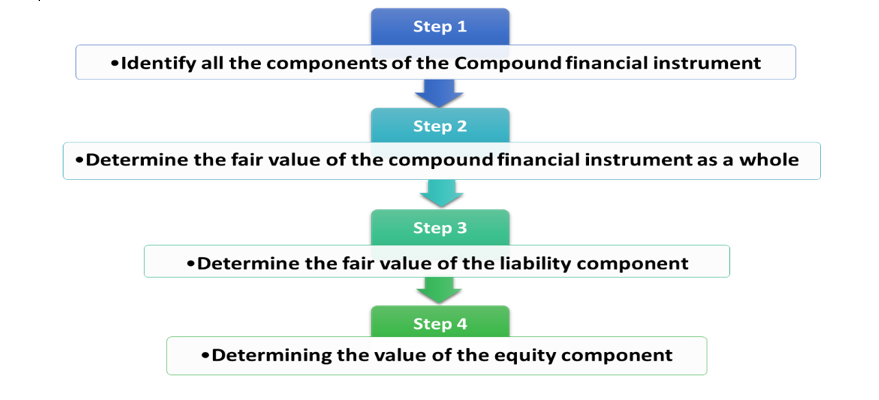Bridging the gap between Ind AS 109 and the regulatory framework for NBFCs
-Abhirup Ghosh
The Reserve Bank of India, on 13th March, 2020, issued a notification[1] providing guidance on implementation of Indian Accounting Standards by non-banking financial companies. This guidance comes after almost 2 years from the date of commencement of first phase of implementation of Ind AS for NBFCs.
The intention behind this Notification is to ensure consistency in certain areas like – asset classification, provisioning, regulatory capital treatment etc. The idea of the Notification is not to provide detailed guidelines on Ind AS implementation. For areas which the Notification has not dealt with, notified accounting standards, application guidance, educational material and other clarifications issued by the ICAI should be referred to.
The Notification is addressed to all non-banking financial companies and asset reconstruction companies. Since, housing finance companies are now governed by RBI and primarily a class of NBFCs, this Notification should also apply to them. But for the purpose of this write-up we wish to restrict our scope to NBFCs, which includes HFCs, only.
The Notification becomes applicable for preparation of financial statements from the financial year 2019-20 onwards, therefore, it seems the actions to be taken under the Notification will have to be undertaken before 31st March, 2020, so far as possible.
In this article we wish to discuss the outcome the Notification along with our comments on each issue. This article consists of the following segments:
- Things to be done by the Board of Directors (BOD)
- Expected Credit Losses (ECL) and prudential norms
- Dealing with defaults and significant increase in credit risk
- Things to be done by the Audit Committee of the Board (ACB)
- Computation of regulatory capital
- Securitisation accounting and prudential norms
- Matters which skipped attention
1. Things to be done by the BOD
The Notification starts with a sweeping statement that the responsibility of preparing and ensuring fair presentation of the financial statements lies with the BOD of the company. In addition to this sweeping statement, the Notification also demands the BOD to lay down some crucial policies which will be essential for the implementation of Ind AS among NBFCs and they are: a) Policy for determining business model of the company; and b) Policy on Expected Credit Losses.
(A) Board approved policy on business models: The Company should have a Board approved policy, which should articulate and document the business models and portfolios of the Company. This is an extremely policy as the entire classification of financial assets, depends on the business model of the NBFC. Some key areas which, we think, the Policy should entail are:
There are primarily three business models that Ind AS recognises for subsequent measurement of financial assets:
(a) hold financial assets in order to collect contractual cash flows;
(b) hold financial assets in order to collect contractual cash flows and also to sell financial assets; and
(c) hold financial assets for the purpose of selling them.
The assessment of the business model should not be done at instrument-by-instrument level, but can be done at a higher level of aggregation. But at the same time, the aggregation should be not be done at an entity-level because there could be multiple business models in a company.
Further, with respect the first model, the Ind AS states that the business model of the company can still be to hold the financial assets in order to collect contractual cash flows even if some of the assets are sold are expected to be sold in future. For instance, the business model of the company shall remain unaffected due to the following transactions of sale:
(a) Sale of financial assets due to increase in credit risk, irrespective of the frequency or value of such sale;
(b) Sale of cash flows are made close to the maturity and where the proceeds from the sale approximate the collection of the remaining contractual cash flows; and
(c) Sale of financial assets due to other reasons, namely, to avoid credit concentration, if such sales are insignificant in value (individually or in aggregate) or infrequent.
For the third situation, what constitutes to insignificant or infrequent has not been discussed in the Ind AS. However, reference can be drawn from the Report of the Working Group of RBI on implementation of Ind AS by banks[2], which proposes that there could be a rebuttable presumption that where there are more than 5% of sale, by value, within a specified time period, of the total amortised cost of financial assets held in a particular business model, such a business model may be considered inconsistent with the objective to hold financial assets in order to collect contractual cash flow.
However, we are not inclined to take the same as prescriptive. Business model of an entity is still a question hinging on several relevant factors, primarily the profit recognition, internal reporting of profits, pursuit of securitization/direct assignment strategy, etc. Of course, the volume may be a persuasive factor.
The Notification also requires that the companies should also have a policy on sale of assets held under amortised cost method, and such policy should be disclosed in the financial statements.
(B) Board approved policy on ECL methodology: the Notification requires the companies to lay down Board approved sound methodologies for computation of Expected Credit Losses. For this purpose, the RBI has advised the companies to use the Guidance on Credit Risk and Accounting for Expected Credit Losses issued by Basel Committee on Banking Supervision (BCBS)[3] for reference.
The methodologies laid down should commensurate with the size, complexity and risks specific to the NBFC. The parameters and assumptions for risk assessment should be well documented along with sensitivity of various parameters and assumptions on the ECL output.
Therefore, as per our understanding, the policy on ECL should contain the following –
(a) The assumptions and parameters for risk assessment – which should basically talk about the probabilities of defaults in different situations. Here it is important to note that the assumptions could vary for the different products that the reporting entity offers to its customers. For instance, if a company offers LAP and auto loans at the same time, it cannot apply same set of assumptions for both these products.
Further, the policy should also lay down indicators of significant increase in credit risk, impairment etc. This would allow the reporting entity in determining classifying its assets into Stage 1, Stage 2 and Stage 3.
(b) Backtesting of assumptions – the second aspect of this policy should deal with backtesting of the assumptions. The policy should provide for mechanism of backtesting of assumption on historical data so as to examine the accuracy of the assumptions.
(c) Sensitivity analysis – Another important aspect of this policy is sensitivity analysis. The policy should provide for mechanism of sensitivity analysis, which would predict the outcome based on variations in the assumptions. This will help in identifying how dependant the output is on a particular input.
Further, the Notification states that any change in the ECL model must be well documented along with justifications, and should be approved by the Board. Here it is important to note that there could two types of variations – first, variation in inputs, and second, variation in the model. As per our understanding, only the latter should be placed before the BOD for its approval.
Further, any change in the assumptions or parameters or the ECL model for the purpose of profit smothering shall seriously be frowned upon by the RBI, as it has clearly expressed its opinion against such practices.
2. Expected Credit Losses (ECL) and prudential norms
The RBI has clarified that whatever be the ECL output, the same should be subject to a regulatory floor which in this case would be the provisions required to be created as the IRAC norms. Let us understand the situation better:
The companies will have to compute two types of provisions or loss estimations going forward – first, the ECL as per Ind AS 109 and its internal ECL model and second, provisions as per the RBI regulations, which has to be computed in parallel, and at asset level.
The difference between the two will have to be dealt with in the following manner:
(A) Impairment Reserve: Where the ECL computed as per the ECL methodology is lower than the provisions computed as per the IRAC norms, then the difference between the two should be transferred to a separate “Impairment Reserve”. This transfer will not be a charge against profit, instead, the Notification states that the difference should be appropriated against the profit or loss after taxes.
Interestingly, no withdrawals against this Impairment Reserve is allowed without RBI’s approval. Ideally, any loss on a financial asset should be first adjusted from the provision created for that particular account.
Further, the continuity of this Impairment Reserve shall be reviewed by the RBI going forward.
A large number of NBFCs have already presented their first financial statements as per Ind AS for the year ended 31st March, 2019. There were two types of practices which were followed with respect to provisioning and loss estimations. First, where the NBFCs charged only the ECL output against its profits and disregarded the regulatory provisioning requirements. Second, where the NBFCs computed provisions as per regulatory requirements as well as ECL and charged the higher amount between the two against the profits.
The questions that arise here are:
(a) For the first situation, should the NBFCs appropriate a higher amount in the current year, so as to compensate for the amount not transferred in the previous year?
(b) For the second situation, should the NBFCs reverse the difference amount, if any, already charged against profit during the current year and appropriate the same against profit or loss?
The answer for both the questions is negative. The provisions of the Notification shall have to be implemented for the preparation of financial statements from the financial year 2019-20 onwards, hence, we don’t see the need for adjustments for what has already been done in the previous year’s financial statements.
(B) Disclosure: The difference between the two will have to be disclosed in the annual financial statements of the company, format of which has been provided in the Notification[4]. Going by the format, the loss allowances created on Stage 1, Stage 2 and Stage 3 cases will have to be shown separately, similarly, the provisions computed on those shall also have to be shown separately.
While Stage 1 and Stage 2 cases have been classified as standard assets in the format, Stage 3 cases cover sub-standard, doubtful and loss assets.
Loss estimations on loan commitments, guarantees etc. which are covered under Ind AS but does not require provisioning under the RBI Directions should also be presented.
3. Dealing with defaults and significant increase in credit risk
Estimation of expected losses in financial assets as per Ind AS depends primarily on credit risk assessment and identifying situations for impairment. Considering the importance of issue, the RBI has voiced its opinion on identification of “defaults” and “significant increase in credit risk”.
(A)Defaults: The next issue which has been dealt with in the Notification is the meaning of defaults. Currently, there seems to be a departure between the Ind AS and the regulatory definition of “defaults”. While the former allows the company to declare an account as default based on its internal credit risk assessments, the latter requires that all cases with delay of more than 90 days should be treated as default. The RBI expects the accounting classification to be guided by the regulatory definition of “defaults”.
If a company decides not to impair an account even after a 90 days delay, then the same should be approved by the Audit Committee.
This view is also in line with the definition of “default” proposed by the BASEL framework for IRB framework, which is:
“A default is considered to have occurred with regard to a particular obligor when one or more of the following events has taken place.
(a) It is determined that the obligor is unlikely to pay its debt obligations (principal, interest, or fees) in full;
(b) A credit loss event associated with any obligation of the obligor, such as a charge-off, specific provision, or distressed restructuring involving the forgiveness or postponement of principal, interest, or fees;
(c) The obligor is past due more than 90 days on any credit obligation; or
(d) The obligor has filed for bankruptcy or similar protection from creditors.”
Further, the number of cases of defaults and the total amount outstanding and overdue should be disclosed in the notes to the financial statements. As per the current regulatory framework, NBFCs have to present the details of sub-standard, doubtful and loss assets in its financial statements. Hence, this disclosure requirement is not new, only the sub-classification of NPAs have now been taken off.
(B) Dealing with significant increase in credit risk: Assessment of credit risk plays an important role in ECL computation under Ind AS 109. Just to recapitulate, credit risk assessments can be lead to three possible situations – first, where there is no significant increase in credit risk, second, where there is significant increase in credit risk, but no default, and third, where there is a default. These three outcomes are known as Stage 1, Stage 2 and Stage 3 cases respectively.
In case an account is under Stage 1, the loss estimation has to be done based on probabilities of default during next 12 months after the reporting date. However, if an account is under Stage 2 or Stage 3, the loss estimation has to be done based on lifetime probabilities of default.
Technically, both Stage 1 and Stage 2 cases would fall under the definition of standard assets for the purpose of RBI Directions, however, from accounting purposes, these two stages would attract different loss estimation techniques. Hence, the RBI has also voiced its opinion on the methodology of credit risk assessment for Stage 2 cases.
The Notification acknowledges the presence of a rebuttable presumption of significant increase in credit risk of an account, should there be a delay of 30 days or more. However, this presumption is rebuttable if the reporting entity has reasonable and supportable information that demonstrates that the credit risk has not increased significantly since initial recognition, despite a delay of more than 30 days. In a reporting entity opts to rebut the presumption and assume there is no increase in credit risk, then the reasons for such should be properly documented and the same should be placed before the Audit Committee.
However, the Notification also states that under no circumstances the Stage 2 classification be deferred beyond 60 days overdue.
4. Things to be done by the ACB
The Notification lays down responsibilities for the ACB and they are:
(A) Approval of any subsequent modification in the ECL model: In order to be doubly sure about that any subsequent change made to the ECL model is not frivolous, the same has to be placed before the Audit Committee for their approval. If approved, the rationale and basis of such approval should be properly documented by the company.
(B) Reviewing cases of delays and defaults: As may have been noted above, the following matters will have to be routed through the ACB:
(a) Where the reporting entity decides not to impair an account, even if there is delay in payment of more than 90 days.
(b) Where as per the risk assessment of the reporting entity, with respect to an account involving a delay of more than 30 days, it rebuts that there is no significant increase in credit risk.
In both the cases, if the ACB approves the assumptions made by the management, the approval along with the rationale and justification should be properly documented.
5. Computation of Regulatory Capital
The Notification provides a bunch of clarifications with respect to calculation of “owned funds”, “net owned funds”, and “regulatory capital”, each of which has been discussed here onwards:
(A) Impact of unrealised gains or losses arising on fair valuation of financial instruments: The concept of fair valuation of financial instruments is one of the highlights of IFRS or Ind AS. Ind AS 109 requires fair valuation of all financial instruments. The obvious question that arises is how these gains or losses on fair valuation will be treated for the purpose of capital computation. RBI’s answer to this question is pretty straight and simple – none of these of gains will be considered for the purpose of regulatory capital computation, however, the losses, if any, should be considered. This view seems to be inspired from the principle of conservatism.
Here it is important to note that the Notification talks about all unrealised gains arising out of fair valuation of financial assets. Unrealised gain could arise in two situations – first, when the assets are measured on fair value through other comprehensive income (FVOCI), and second, when the assets are measured on fair value through profit or loss (FVTPL).
In case of assets which are fair valued through profit or loss, the gains or losses once booked are taken to the statement of profit or loss. Once taken to the statement of profit or loss, these gains or losses lose their individuality. Further, these gains or losses are not shown separately in the Balance Sheet and are blended with accumulated profits or losses of the company. Monitoring the unrealised gains from individual assets would mean maintenance of parallel accounts, which could have several administrative implications.
Further, when these assets are finally sold and gain is realised, only the difference between the fair value and value of disposal is booked in the profit and loss account. It is to be noted here that the gain on sale of assets shown in the profit and loss account in the year of sale is not exactly the actual gain realised from the financial asset because a part of it has been already booked during previous financial years as unrealised gains. If we were to interpret that by “unrealised gains” RBI meant unrealised gains arising due to FVTPL as well, the apparent question that would arise here is – whether the part which was earlier disregarded for the purpose of regulatory capital will now be treated as a part of capital?
Needless to say, extending the scope of “unrealised gains” to mean unrealised gains from FVTPL can create several ambiguities. However, the Notification, as it stands, does not contain answers for these.
In addition to the above, the Notification states the following in this regard:
- Even unrealised gains arising on transition to Ind AS will have to be disregarded.
- For the purpose of computation of Tier I capital, for investments in NBFCs and group companies, the entities must reduce the lower of cost of acquisition or their fair value, since, unrealised gains are anyway deducted from owned funds.
- For any other category of investments, unrealised gains may be reduced from the value of asset for the purpose of risk-weighting.
- Netting off of gains and losses from one category of assets is allowed, however, netting off is not allowed among different classes of assets.
- Fair value gains on revaluation of property, plant and equipment arising from fair valuation on the date of transition, shall be treated as a part of Tier II capital, subject to a discount of 55%.
- Any unrealised gains or losses recognised in equity due to (a) own credit risk and (b) cash flow hedge reserve shall be derecognised while determining owned funds.
(B) Treatment of ECL: The Notification allows only Stage 1 ECL, that is, 12 months ECL, to be included as a part of Tier II capital as general provisions and loss reserves. Lifetime ECL shall not be reckoned as a part of Tier II capital.
6. Securitisation accounting and prudential norms
All securitisation transactions undergo a strict test of de-recognition under Ind AS 109. The conditions for de-recognition are such that most of the structures, prevalent in India, fail to qualify for de-recognition due to credit enhancements. Consequently, the transaction does not go off the books.
The RBI has clarified that the cases of securitisation that does not go off the books, will be allowed capital relief from regulatory point of view. That is, the assets will be assigned 0% risk weight, provided the credit enhancement provided for the transaction is knocked off the Tier I (50%) and Tier II (remaining 50%).
There are structures where the level of credit enhancement required is as high as 20-25%, the question here is – should the entire credit support be knocked off from the capital? The answer to this lies in the RBI’s Securitisation Guidelines from 2006[5], which states that the knocking off of credit support should be capped at the amount of capital that the bank would have been required to hold for the full value of the assets, had they not been securitised, that is 15%.
For securitisation transactions which qualify for complete de-recognition, we are assuming the existing practice shall be followed.
But apart from the above two, there can also be cases, where partial de-recognition can be achieved – fate of such transactions is unclear. However, as per our understanding, to the extent of retained risk, by way of credit enhancement, there should be a knock off from the capital. For anything retained by the originator, risk weighting should be done.
Matters which skipped attention
There are however, certain areas, which we think RBI has missed considering and they are:
- Booking of gain in case of de-recognition of assets: As per the RBI Directions on Securitisation, any gain on sale of assets should be spread over a period of time, on the other hand, the Ind AS requires upfront recognition of gain on sale of assets. The gap between the two should been bridged through this Notification.
- Consideration of OCI as a part of Regulatory Capital: As per Basel III framework, other comprehensive income forms part of Common Equity Tier I [read our article here], however, this Notification states all unrealised gains should be disregarded. This, therefore, is an area of conflict between the Basel framework and the RBI’s stand on this issue.
Read our articles on the topic:
- NBFC classification under IFRS financial statements: http://vinodkothari.com/wp-content/uploads/2018/11/Article-template-VKCPL-3.pdf
- Ind AS vs Qualifying Criteria for NBFCs-Accounting requirements resulting in regulatory mismatch?: http://vinodkothari.com/2019/07/ind-as-vs-qualifying-criteria-for-nbfcs/
- Should OCI be included as a part of Tier I capital for financial institutions?: http://vinodkothari.com/2019/03/should-oci-be-included-as-a-part-of-tier-i-capital-for-financial-institutions/
- Servicing Asset and Servicing Liability: A new by-product of securitization under Ind AS 109: http://vinodkothari.com/2019/01/servicing-asset-and-servicing-liability/
- Classification and reclassification of financial instruments under Ind AS: http://vinodkothari.com/2019/01/classification-of-financial-asset-liabilities-under-ind-as/
[1] https://www.rbi.org.in/Scripts/NotificationUser.aspx?Id=11818&Mode=0#F2
[2] https://rbidocs.rbi.org.in/rdocs/Content/PDFs/FAS93F78EF58DB84295B9E11E21A91500B8.PDF
[3] https://www.bis.org/bcbs/publ/d350.pdf
[4] https://rbidocs.rbi.org.in/rdocs/content/pdfs/NOTI170APP130320.pdf
[5] https://www.rbi.org.in/scripts/NotificationUser.aspx?Id=2723




